Blocked and Ready to Wear
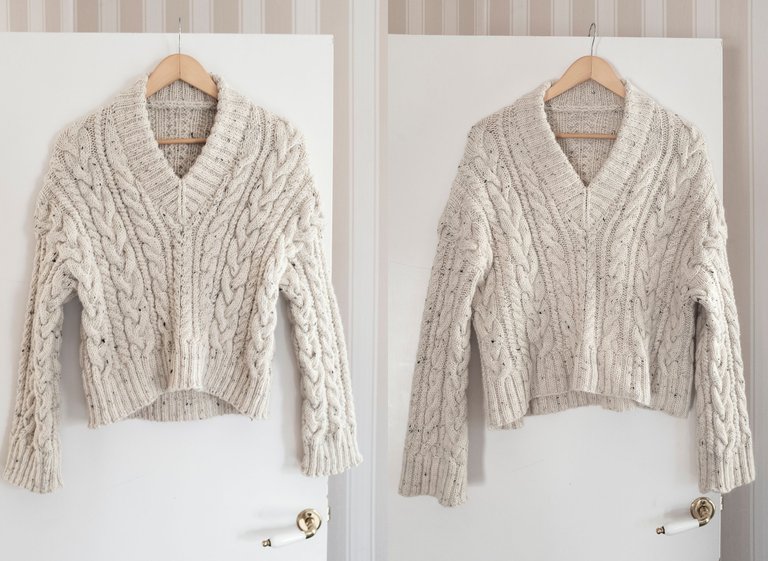
I've finally finished my dream cableknit sweater, the Sweater no.20 , designed by My Favourite Things Knitwear. It took me a bit longer than expected because the sleeves were quite annoying to do, as they always are with top-down knitted sweaters. Next time I'm gonna try and knit the sleeves separately and attach with a kitchener stitch afterwards.
Once the sweater was done and I had weaved in all the ends, it was time for one more important step; the blocking. I don't know where the word originates from in this context but I find it to be a bit confusing, but hey, what isn't in the English language... Blocking is when you wash/moisten your knit or crochet and lay it down to dry to its final form. For some intricate lace work you might even need to pin it to something to make sure the shapes are perfect.
Blocking a sweater makes a huge difference in how the garment hangs, looks and feels, depending on the pattern and material. Some works can do without but for something like this with lots of cableknit texture, it's a game changer. Washing the knit relaxes and softens the fibres and makes the stitches more even. For once I actually took before and after pictures so you can see how much the knit changed in the process.

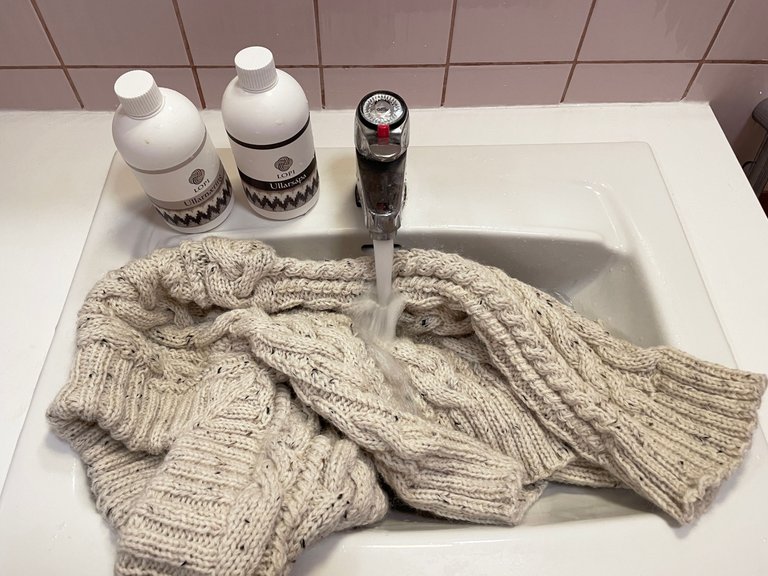
Blocking a sweater has many purposes and cleaning the knit is actually the least important. Depending on your yarn, how long it's been stored and where, how sweaty your hands get when doing a difficult part, and how much chips you have eater near the knit while making it, yours might actually need the wash.
I always use Istex's wool soap and conditioned, the manufacturer of the most popular Icelandic yarns. I only use a tiny bit of both, and you don't need to rinse out the conditioner. Depending on the work I might just use the conditioner, or vice versa.
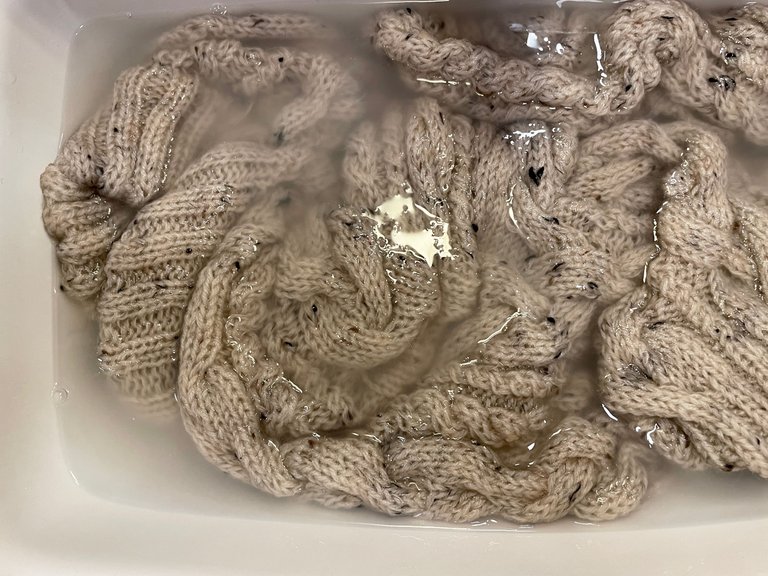
I fill the basin with lukewarm water, add the soap and gently squeeze the knit to make sure it gets wet all the way through. Then I do a quick rinse, add more water and condition. Try and get as much water out of the knit at the end but never ever ring your knitwear.
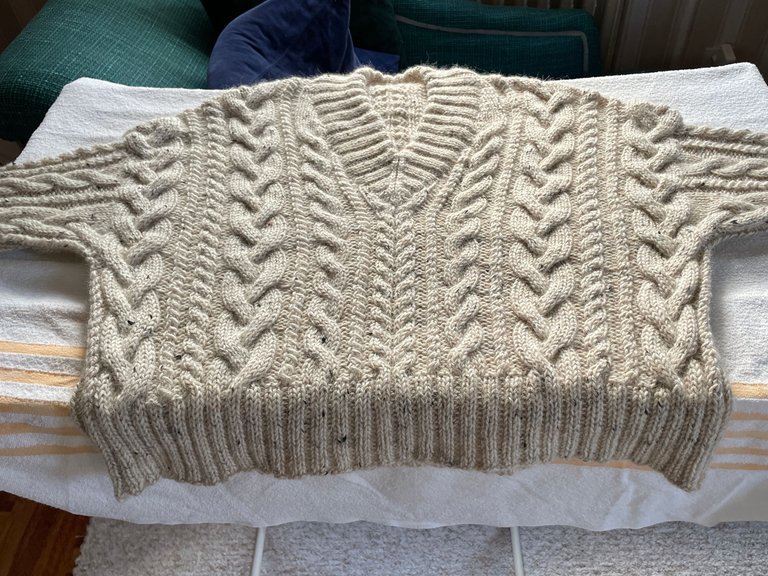
I then rolled the sweater inside a towel, getting more water out, and then changed to a dry towel and lay the sweater on top, and then put another towel inside. Here is where you can fuss about with the shape and make sure everything is even. And now we wait, for almost 24 hours with this because it's a thick ass knit, deliciously so.
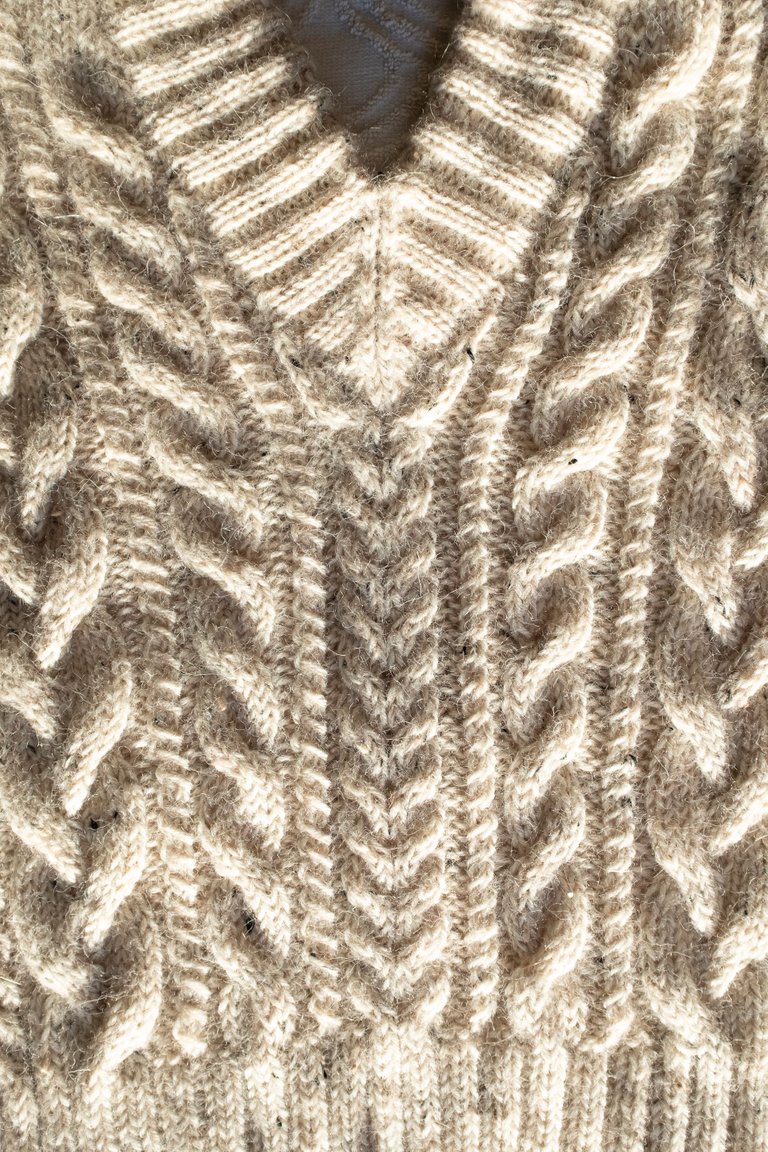
When the sweater started to dry, the yarn(s) bloomed beautifully and revealed the final shape and texture, absolutely fantastic.
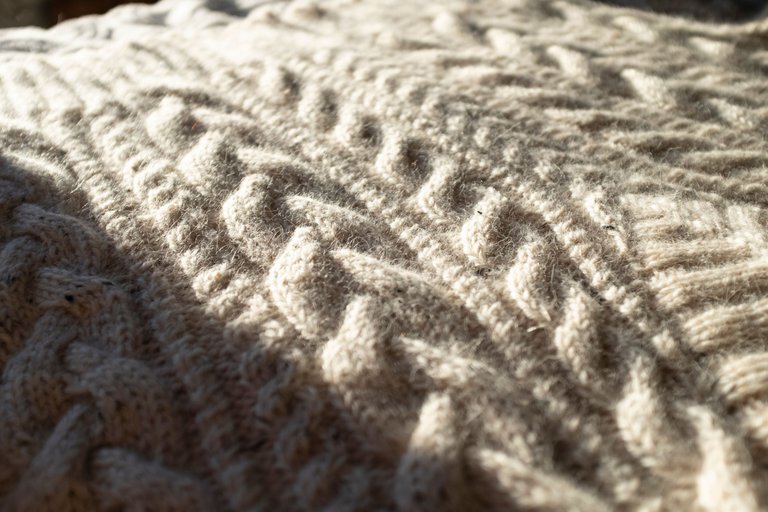
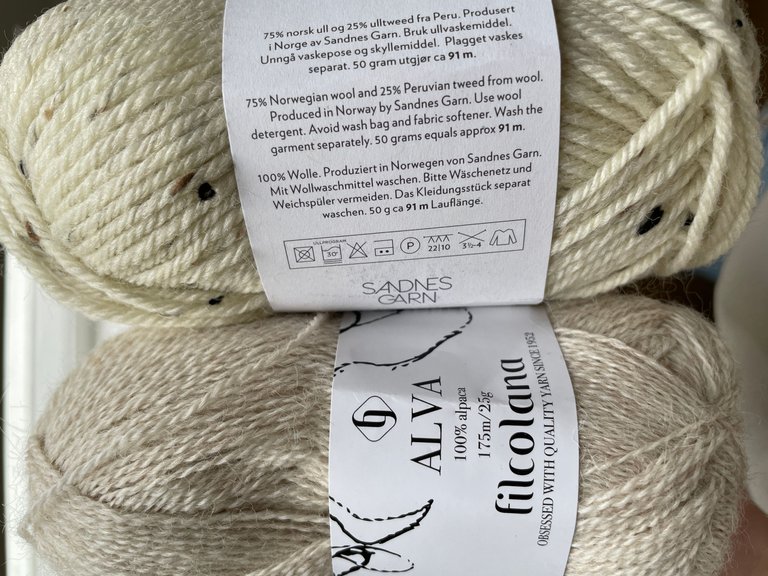
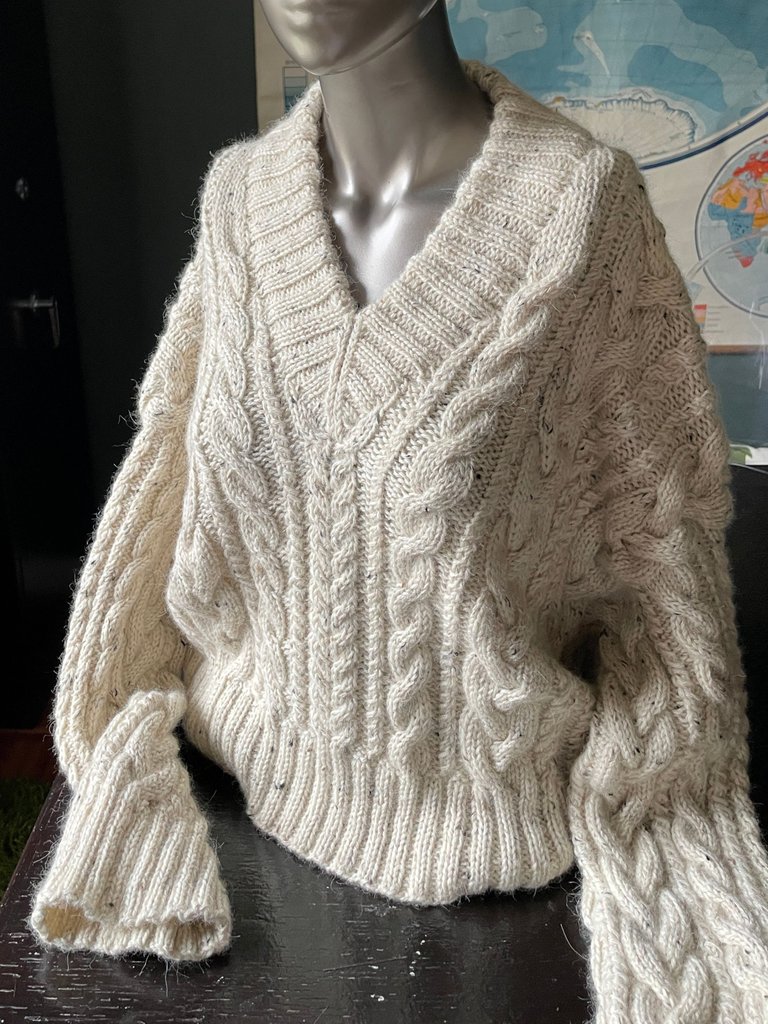
It’s not absolutely necessary but one of those little things you can do to make the knit look really polished. Has your grandma taught you how to knit?
Wow, I loved it! It makes me want to try knitting. 😍 I always admire your knitting skills and this sweater proves it. Love the details @eveuncovered.
Do try it, it’s such a great and useful skill. Though the learning curve can be quite steep 😁
https://twitter.com/1246191753968775168/status/1583420209557172224
The rewards earned on this comment will go directly to the people( @jonalyn2020 ) sharing the post on Twitter as long as they are registered with @poshtoken. Sign up at https://hiveposh.com.
I learned something new today; blocking.
The other option is to wear it in I guess, like my sweater you knitted for me and are wearing
into death. You better be looking after it!That can work too, especially if you get wet with it and don’t mind smelling like a wet lamb 😝
Haha! Wet lamb smell...who wouldn't want to smell like a wet lamb?
That texture is so fabulous! I can almost feel how soft it is. I am sure you will enjoy it for many winters to come. !BBH
@eveuncovered! Your Content Is Awesome so I just sent 1 $BBH (Bitcoin Backed Hive) to your account on behalf of @fiberfrau. (1/5)
This was my first proper cableknit and it was very enjoyable to knit, don’t know why I took me so long to get into!
Thank you for sharing this post on HIVE!
Your content got selected by our fellow curator hafizullah & you received a little thank you upvote from our non-profit curation initiative. Your post will be featured in one of our recurring curation compilations which is aiming to offer you a stage to widen your audience within the DIY scene of Hive.
Next time make sure to post / cross-post your creation within the DIYHub community on HIVE and you will receive a higher upvote!
Stay creative & hive on!
It looks so beautiful!!! You did an awesome job 😍😍
Thank you! I bought this pattern immediately as I saw it, the thick V-neck is a show stopper.
Totally!! And I'm still amazed at how you managed to weave the entire sweater without dividing it into parts. I would have thought that the neck and the sleeves would have to be attached to the sweater afterwards.
I’m not sure if we speak the same language here in terms of crafts but the sweater is done in parts in a way by picking up stitches on the shoulders, sleeves and neckline :)
Here is the body of the sweater almost done and next I picked up stitches along the neckline to knit the collar.
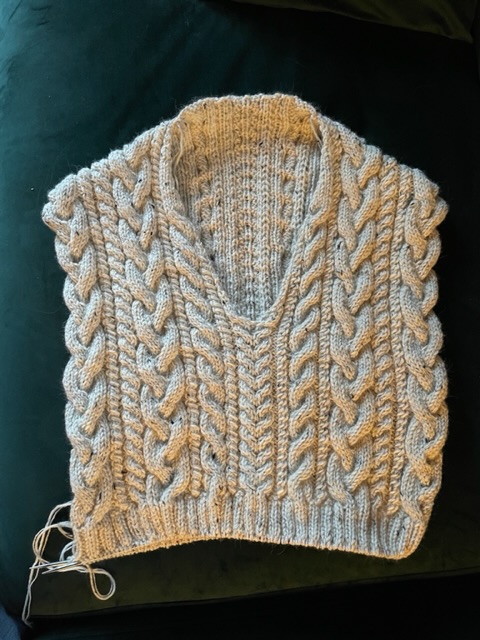
Oooooooooooooh now I get it 😂😂
This is extremely beautiful and eye catching. Nicely done job.
What an amazing needle work..you did a great job..
Gorgeous and multi-talented seriously girl you are amazing!
Takes one to know one 😘
🥰❤️
The knitting and crochet books are popular at the library, but I don't know how many people actually make anything after borrowing the books. I usually don't pry into the private lives of our patrons, after all. I just know books specifically about cable knit sweaters specifically were recently returned.
In my opinion and from what I know about other knitters, we are always excited for a chance to talk about our crafts so ask away! I think most people borrow the knitting books because they actually want to make something, if you just wanna browse for inspiration there is always the internet and pinterest full of crafts.
Beautiful sweater! Good job.